
by Mollie Millington | Sep 30, 2020 | health, product review
It has been over six months since the UK went into total lockdown due to the Covid-19 pandemic. We seemed to have come out the other side with restrictions loosening over the summer. However over the last few weeks, new local measures have been but into place around the UK as the data implies we are at the start of a second peak.

I have been fortunate to have felt physically well during all this. We think James had Covid-19 in May, but both his test (through NHS) and mine (thanks to work) were negative. He was in bed for two weeks (although no fever or cough) which was extremely unusual as he rarely gets sick. Back then, little was known about the immunity that having Covid-19 gave you. Even now, there isn’t much data. There is a man in Hong Kong that tested positive for Covid-19 four months after his initial positive test. This is worrisome for those relying on a vaccine to make the world return to normal. Will a vaccine need to be annual, like the flu shot? But that is an entirely different post for another day.

If you contract Covid-19, your body should elicit a immune response in which B-cells are produced to identify the virus and destroy it. Having an antibody test is a way to see if you have these protector cells available. Cerascreen contacted me to try out their at home antibody test for Covid-19. You may remember I did another at home test for food interolerance back in February. The general collection technique was the same. Prick your finger, drip blood into a tube and send off for analysis.

The Cerascreen test kits were in high demand when I ordered mine in June so it took a week for it to arrive. You want to collect your blood sample on Monday or Tuesday morning and post the same day so the sample can swiftly arrive at the testing centre. No refrigeration is needed. The next step is just wait for an email saying you results are available on their website. You can then log in and download your seven page report. It provided a lot of information about how to interpret the results and what to do if you are still feeling ill.

Antibody tests have two measures that indicate how reliable a test is- sensitivity and specificity. In this case, sensitivity means the test will detect everyone who has the antibodies and give a positive result. Specificity means how many false positives it will detect. At the start of the pandemic, Roche antibody tests were known as the gold standard of antibody testing (specificity greater than 99.8% and sensitivity of 100% (14 Days post-PCR confirmation). Unfortunately, many companies came out with kits of varying quality and their customers were scammed out of money. The Cerascreen kit has a sensitivity of 97.4-100%. and specificity of 98.9-99.2%.
As I mentioned before, we were convinced that James has the virus, even though his (traditional) test result and mine were both negative. We continued to share a bed while he was sick and have always had separate bath towels. He said he made an extra effort to wash his hands well while sick too. One of the frustrating things about Covid-19 is how people can be asymptomatic and therefore vectors of the disease. Also, symptoms can be delayed. James’s GP said that depending on when you obtain a sample (day 3 of symptoms versus day 5) can also influence the test results.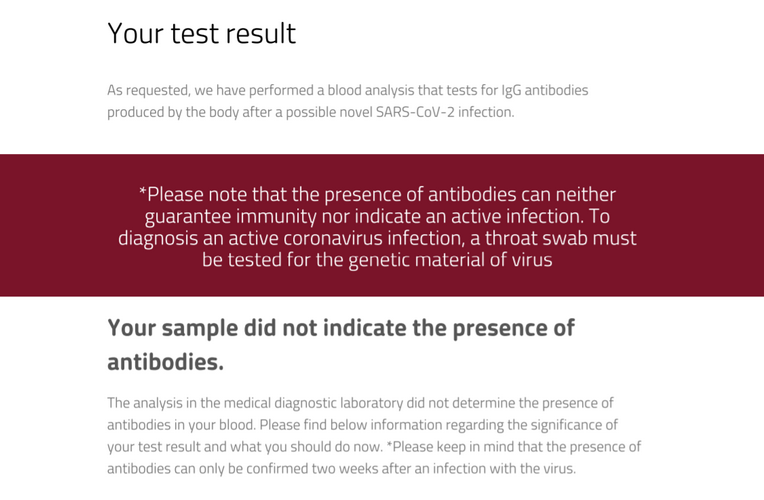
It took about a week for my results to arrive via email. My antibody test was negative, meaning that I had not had Covid-19 at the time I took the test in June. I was partially surprised because I don’t have a great immune system (pneumonia, chicken pox, glandular fever, blood clot, etc). I thought for sure if James had it, I would have too (even though this would have meant that I was asymptomatic).
Why would you want an antibody test? Some people might want peace of mind that they have already had the virus and therefore can’t infect anyone when visiting loved ones or their colleagues. Perhaps they would decline a vaccination if there was a vaccine shortage if they tested positive for antibodies. There is no way of knowing when a person had Covid-19 though from the antibody test. Whether you test positive or negative for antibodies, you should still take precautions such as wearing a face covering, using hand sanitizer and social distancing as it is still unclear how long the antibodies will last for. It also puts people at ease to see others taking the same precautions. By making it the social norm, we can make these practices more commonplace.
I feel very fortunate to have been healthy so far in 2020 and am grateful for this. Please take care of yourself and loved ones as we continue to navigate through this global crisis.
Learn more about antibody testing over on the NHS website.
Cerascreen kindly gifted me the Covid-19 antibody test. All opinions are honest and my own. The Cerascreen Covid-19 kit is now on offer for 5% off. The price includes shipping, analysis and test report.

by Mollie Millington | Jun 3, 2020 | giveaway, health, product review
Wellness and immunity are two things that are very important to me, probably because my immune system isn’t great. I always seem to be at the doctor for one thing or another. I had pneumonia when I was a child, a really bad case of the chicken pox too (while my brother had one spot and felt fine) and then had glandular fever (mono) in grad school followed by a blood clot (partially due to genetic predisposition). The simple things to keep a body healthy, such as not smoking or doing illegal drugs, are something I have been able to embrace for my entire life. Obtaining good quality sleep and keeping stress levels low are something I have always struggled with. I am a light sleeper and tend to over-commit, so those two things alone probably knock some of my natural immunity. I shared my top immunity tips with the Thinking Slimmer gang back in March and thought you might find them useful too. Hopefully these are accessible enough that you can start to incorporate them into your daily life.

Add colour to every meal with an additional serving of fruit or vegetables. These natural foods have a range for vitamins and minerals that your body needs to obtain from food. The additional serving might be a side salad with dinner; sliced carrots and bell peppers as a snack; something added to a recipe, such as frozen peas; fruit with yogurt for dessert. Remember, you want five servings a day with varying colours. When in doubt, go for the veg!

Keep a moody diary to look for patterns with sleep, daily routine, exercise, and stress levels. These will all interact with each other, in good and bad ways. Remember you want to keep stress low and sleep at least eight hours. If you are not hitting eight hours, try adding an additional 30 minutes every two weeks and see if you feel more energised.
If you get hungry, have a glass of water and keep hands busy (give yourself a manicure, wash the dishes, or put away the laundry). Eight glasses or two litres of water a day is optimal. Hunger pains can sometimes mean you are dehydrated though. To avoid succumbing to every twinge, drink your water and see if you can distract your mind from food for about 15 minutes. If you are still hungry after that, have a snack.
Take a multivitamin with vitamin D3. This is really important if you are a picky eater or limit different food groups to have a multivitamin to ensure your essential nutritional needs are met. In addition, levels of vitamin D3 in Covid-19 patients seems to influence severity of symptoms.

Exercise more. It will help relieve stress, strengthen your cardiovascular system, make you physically stronger, and can give you an energy boost. Read more at the US National Library of Medicine if you need additional info, although it seems that the exact mechanism is unclear. Here is a peer-reviewed study on the topic which cites how new technology will help us figure out the “how.”

Try FourFiveCBD Immunity Box. Ok this is a little cheeky to suggest, but FourFive CBD sent me one of their limited edition boxes to try out (and I have one to giveaway too). It contains the following:

What did I think of everything? I am really enjoying the CBD effervescent tablets on the hot days we have been having as of late. Pulsin products I have had before but not this flavor bar. It was a perfect way to refuel after a home workout. Finally, I have been taking two of the Ashwagandha plus capsules every day. I hadn’t heard of this root before, but the handy flyer that comes with the box explains the benefits of each product. Ashwagandha is supposed to reduce anxiety, lower cortisol levels, and aid in muscle recovery. These are all the things I need in my life right now. I have only been taking it for two weeks and am trying to monitor myself for changes.
Things I still need to try: Vitamin D is something I was already taking so once I finish the bottle I have, I will start taking the nutrigold capsules. The cacao will be used for baking this weekend as I have brownies on my brain as of late. The biotic and vitamin C I will start taking later as I wanted to try the Ashwagandha on its own first.
Are you ready to try all of these for yourself? Head over to my Instagram to enter to win a box for yourself. As I have to ship it to you, the giveaway is limited to those with a UK postal address. Contest closes 12 June 2020 at midnight. Winner will be contacted via direct message on Instagram. Good luck!

One more thing- with every purchase of the box, FourFive CBD donates £5 to Compassion London. So, if you don’t win, your purchase will make a difference to those less fortunate. Very cool indeed.
Thanks to FourFive CBD for the complimentary product. All opinions are honest and my own.

by Mollie Millington | Mar 18, 2020 | happiness, health, holistic
NEW START DATE OF 15 APRIL 2020. Sign up today.
Sadly, many people around the world will soon find themselves at home self-isolating, if they are not already. Many of the people I have talked to are concerned they will get bored and have ‘nothing to do.’ I am on the other side of the coin and looking forward to catching up on a few outstanding projects (my nutrition course, a baby quilt for a friend’s kid who is now 3, cooking from scratch). What better time than to offer my 30 Days to Happy online program?
Everyone deserves to be happy. As the Happiness Personal Trainer and a qualified health coach, I have the tools to guide you through small changes that can add up to make a big difference in your daily life. Why not join me for a unique online training program that I developed to cultivate happiness through fitness, food, feelings and fun? I will be there to hold your hand, cheer you on, and guide you through some of your roadblocks as we work together over 30 days.
’30 Days To Happy’ is conducted online, meaning anyone in the world can join as long as they have access to the internet. Held over email and Facebook, we will touch upon attributes of fitness, food, fun and feelings, learning healthy ways to incorporate each into our daily lives by gently stepping in and out of our comfort zones. Feel connected to others in this time of uncertainty.
For only £59, you’ll get a introductory webinar to learn more about the program and meet others in the group; a weekly challenge video and worksheet to complete; personalized coaching via the Nudge app on your Smartphone, and community support in a private Facebook group. We will wrap it up with another video call to see what each participant learned through the course. Overall, it only takes a few minutes a day to complete the weekly challenge.

Testimonials from my pilot session:
“I really enjoyed working with Mollie on the 30 days to happy programme, I learned a lot about my habits and had fun trying new things.” -Julie
“Mollie’s 30 Days to Happy is like a gentle nudge from a friend. She provides really great prompts to dig a bit deeper and really think about your day-to-day mood. It challenges you to find happiness is all aspects of life and see how it all relates. I liked meeting new people through the program too and hope to continue using her tips throughout the year!” -Eileen
Are you in?
The program runs 15 April – 14 May 2020, costing just £59. The strategies you will learn will last a lifetime, so invest in yourself and sign up today. Registration closes 14 April 2020. Sign up via the button below. There won’t be a limit to registrations this time around as I want anyone who needs a personal connection to the outside world to join. I would like to give NHS workers complimentary registration. If this is you, please email me mollie@ptmollie.com. Please help spread the word to friends and family.

by Mollie Millington | Mar 11, 2020 | health, travel

With Coronavirus all over the news and a trip to Japan recently cancelled due to concerns the virus will spread, my husband asked me the other night if we should wear masks when we go on our re-booked holiday to the USA. Let me be clear that I am not a medical professional so if you are worried, you should speak to your GP or consult the links at the bottom of this post before you decide if you want to wear a mask. I do, however, have many years experience fitting people to wear the correct size N95 mask (random part of my job during my masters degree and also part of my current role). Read on to learn more about personal protective equipment masks and what they are used for.
What does N95 mean?
This rating means the mask filters out 95% of particles when worn properly. In the UK, the equivalent mask rating is FFP2.

Where can I get one that fits?
You will need to have a mask fitting to ensure you have one that fits properly. This involves putting a hood over your head while wearing the mask and having a bitter solvent sprayed into the hood (even my mom has had this done!). The idea is that a correctly fitted mask will not allow any air to get between the mask and your skin. This prevents germs from entering the nose or mouth and therefore infecting you. If you have facial hair, you will not be able to wear a mask effectively. You can watch my YouTube video for more info.
Keep in mind, that the news is reporting a global shortage of personal protective equipment (PPE) due to the outbreak. In addition, there are many scams and price inflation occurring on masks, hand santizers and disinfecting wipes. I suggest leaving the masks for the professionals.
What is it like to wear one?
The masks will make it hard to breathe and can be very hot to wear, depending on the environmental conditions and what you are doing. It also makes it hard for others to hear you because your speech will be muffled.

Will the Coronavirus kill me?
The World Health Organization (WHO) reports global death rate of 3.5% for Coronanirus. The population most at risk is people 60+ years old who have underlying health conditions. Children seem to be asymptomatic.
What can I do to reduce my risk of catching Coronavirus?
Many health officials have asked people to self-isolate if they have been traveling to affected areas. Frequently washing your hands for at least 20 seconds, especially when in public places, will also help reduce the risk. Carry hand santizer and avoid touching your hands to your face and eyes if they are not clean. Finally, aim to stay six feet away from infected people, especially if they are coughing or sneezing. Refer to your local health authorities for up-to-date information as the global situation seems to be changing on a daily basis.
Unfortunately, a vaccine is at least 12-18 months away from being ready for market. This is due to rigorous testing in both animal and human models. I have read reports that the incubation period is five days and others that report 12 days. Working at home (which also helps you avoid public transport), will help reduce your risk of exposure and also prevent you from spreading the virus if you are infected.

Each day, we learn more about the virus. The lack of knowledge has been the biggest barrier. We don’t know all methods of transmission, how long it can live on surfaces, and other important information which can help limit the spread of the diseases. Stay up to date by visiting the links and references below for more information (some updated daily) rather than relying on social media:
World Health Organization (WHO) Novel Coronavirus outbreak 2019
Center for Disease Control and Prevention Coronavirus 2019
UK Gov Corona virus info
Guardian: What is Coronavisus and how worried should we be?

by Mollie Millington | Feb 11, 2020 | health, nutrition, product review
This post might be a little TMI and includes a photo of blood. Read on at your own risk. You have been warned!
When I run, I have several issues to worry about. One of them is how much my nose runs, which causes an annoying cough that tends to concern everyone I am running with (I assure you that I am ok and just as annoyed about my cough as you are). The other is trying not to go to the bathroom while I run. It looks like caffeine, along with my cough, tends to induct stress incontinence (something I have talked about previously here on the blog) upon occasion when I run. Currently, I am working on my core and pelvic core strength to help with this. The other problem I often have is a runner’s tummy, which causes my stomach to gurgle and me to worry if I can make it to the next available loo or have to pull a Paula Radcliffe on the side of the road. Through trial and error, I have now developed a morning routine to fuel early morning runs. It involves have porridge at least 2 hours before my run, followed by a nap, a trip to the loo, and then quite possibly another loo stop along the route. Wearing a bum bag on my back tends to accelerate my digestion, so now I wear it on my hip or choose a running vest instead. Interesting, huh?
When lifelab testing offered to provide a complimentary complete body test, I was both curious and relieved. Maybe now I could get to the bottom of what causes me all of these issues. I would do almost anything to be a runner that never wees themselves, doesn’t plan routes according to public loos, never has a runny nose, and can hear what other people are saying. But alas, I will never be normal. I could only hope the results would offer some incite into what my body prefers and doesn’t like.

lifelab testing offers several different test kits:
- Basic intolerance test
- Basic allergy test
- Complete intolerance test
- Complete body test
- MyDNA test
(BTW lifelab testing is having a 25% off offer using the code VALENTINE until 20/2/20. Pretty sweet, huh?)

Within a day or two or requesting my kit, it arrived with instructions and all the kit you need. You need to prick your finger to send 300 uL of blood back to the lab for IgG and IgE testing. Due to postage delays and sending the sample at ambient temperature, life lab testing suggests collecting and sending you sample on a Monday or Tuesday. This ensures your sample is processed in a timely manner and doesn’t degrade with any delays. I strongly suggest you also follow their instructions on how to get blood flowing to your fingers. I had to prick four fingers to get enough blood but I think this may have been due to my mild clotting disorder. I ran my finger under warm water, swung it in the air, massage the palm and finger, etc as the kit instructed. Luckily, I had a sterile needle in my foot blister kit from the Wadi Rum Ultra to help me finish the job. Another tip is that you also need to press the lance very hard for it to penetrate the skin (I didn’t do this on my first try and therefore wasted the lance. Luckily, two lances are included in the kit. Probably not a good idea to use something else.). I sent off the sample on my way to work and had the results via email within a week’s time.

lifelab testing requires you to create an account which includes your results. Alternatively, the report can be downloaded as a pdf. There are two important sections in my report: allergies and intolerances. You can read more about the difference between the two here. Allergies (measured by IgE levels in blood) tend to be a quick response that can be as extreme as anaphylaxis, and a food intolerance (measured by IgG levels) is when the body has trouble digesting something which results in discomfort hours or even days later.
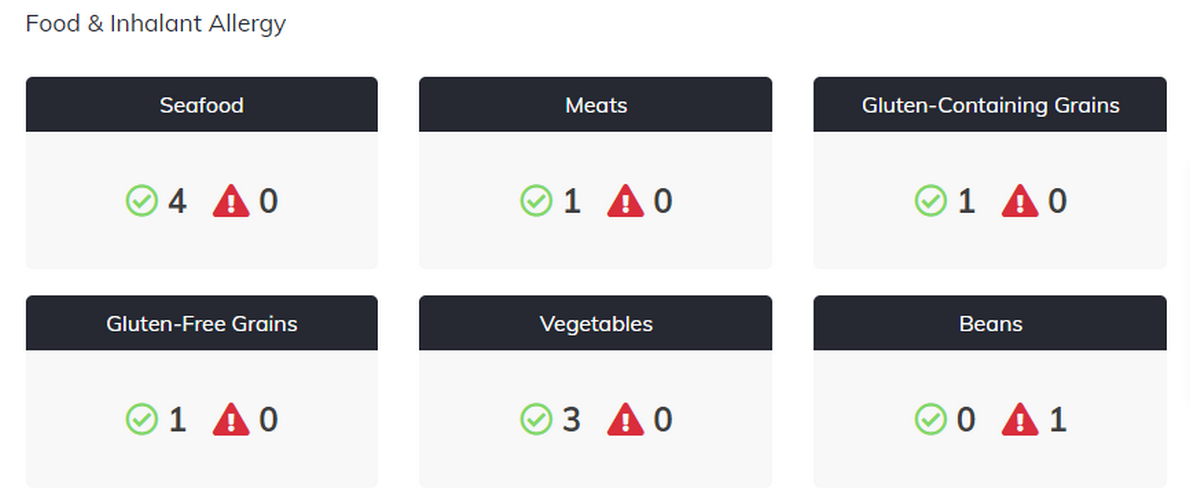
I was surprised by the by some of the results. For example, I had a mild allergic reaction to soy (which is in lots of processed foods?), dog hair (no!!!!!!), horse hair, cockroaches, and almonds. These were all low on the sensitisation scale which is a bit reassuring. To the best of my knowledge, I do not react in a typical allergic way to these items (sneezing, cough, tingly lips, closed throat, etc). With my runny nose and cough, I thought I might be allergic to pollen or grass but these results were negative (guess it is just me then, or exercise-induced rhinitis).
The intolerance tests highlighted a lot of food that I might have trouble digesting. Each person’s body responds differently though, meaning that a high intolerance score does not necessarily manifest in physical symptoms. The table below summarizes my intolerance to various gluten-containing grains.
While not ideal, it is becoming easier and easier to avoid gluten and wheat products. However, I also tested for high intolerance to quinoa and amaranth, leaving only buckwheat and rice for me to enjoy. Other high intolerance levels were noted for:
- soy
- green beans
- egg white
- egg yolk
- milk and other diary (casein, cow’s milk, sheep’s milk, and goat milk, gouda cheese)
- bananas
- almonds
- peanuts
- walnuts
- cashew nuts
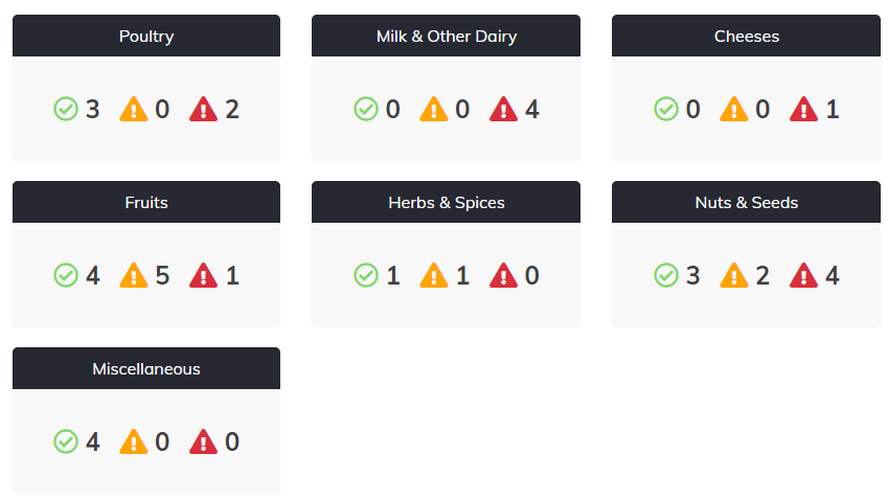
There are 16 other food items not mentioned that I have low level intolerance for. Many of the foods on the list are staples for runners. Ironically, I am not allergic or intolerant of any seafood (remember I am a marine biologist by training). Originally, my intention was to eliminate the foods that might be causing me trouble to see if I can determine how they effect me when re-introduced. Lifelab testing recommends eliminating any foods that are flagged in the allergy section (almonds and soy but I will not give up on dogs) and then performing an elimination diet. They also offer optional nutritional therapist session to coach you through it. A paleo diet or the Whole 30 seems best suited to my results but also requires a lot of commitment, planning, and negotiating with my flexitarian husband. Could I live without eating another apple or orange if it means no more stomach upset or bloating?
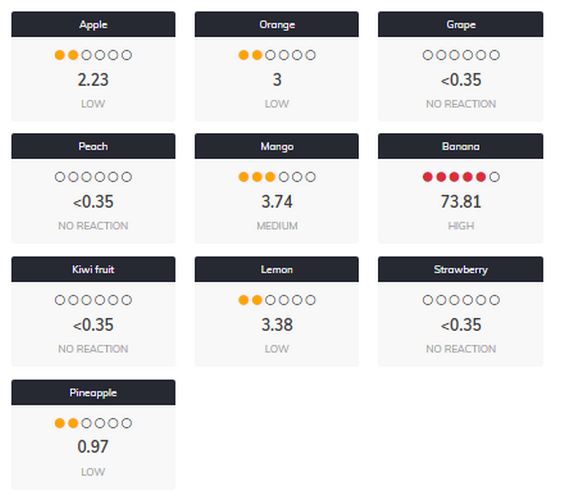
What’s next for me? As Tokyo Marathon is only a few weeks out, I am going to carry on as normal. Once I am back, I will start to eliminate gluten and wheat. Once I have a handle on that, I might try milk too. It seems weird to not have peanuts or almonds, but if I want to feel more energetic, less bloated, and run without the stress of runner’s tummy, then I need to give these results a chance. The good news is that I don’t have to give up Kraft Mac-n-Cheese but just know it will probably make me feel like crap for a few days.

What food(s) could you not live without for your active lifestyle? For example, peanut butter, bananas, porridge….
Thanks for lifelab testing for the complimentary test. All opinions are honest and my own.

by thinkmarsh | Apr 4, 2019 | health, sponsored post
 |
| Pink ribbons raise breast cancer awareness |
Did you know that one in eight women in the UK will be diagnosed with breast cancer? It is something that touches the lives of so many people, I felt it was important to write a blog post about my experience with the screening process. You can also perform breast self-exams on a monthly basis to become familiar with your breast tissue. That way, if anything changes you will recognize the difference (Follow me on Twitter to see my monthly reminders to preform your self-exam on the first of every month.).
This year I turned 40. In the USA, this is the age where you can start receiving annual mamograms (I would imagine this depends on your private health insurance policy). However, in the UK, the procedure is not provided until you reach the age of 50 (every three years and up to age of 71) if treatment is provided on the NHS (they are looking to extending this from 47-73). If you have a family history of breast cancer, screening may be provided earlier.
 |
| Warnings on the door where I had my mamogram |
One of my best friend’s from university was born four days after me. Her mom is a breast cancer survivor. Because of this, I decided to get a mamogram this year. It is available on private health insurance for £122 (and my friend’s mom even offered to pay for it). So I contacted Simplyhealth UK to see if the mamogram would qualify under the diagnostic scans benefit, for which I am allowed a maximum of £500 on my plan. And yes it is! I spoke to my mom about what to expect during the procedure (of course) and she said there can be some discomfort during the process. A mamogram is an x-ray of the breast tissue, which means that the breast is squeezed between two plates. My breasts are not huge but they did get a really good squeeze for about 15 seconds while the nurse set up the proper angle and moved behind the lead screen and take the x-ray. The receptionist I booked with appointment with said it would take 15 minutes but mine took about eight.
 |
| The x-ray machine which takes the mamogram. |
My mom told me that she has dense breast tissue and needs to have an ultrasound after her mamogram as part of her annual appointment. I was worried this would be the case for me but the nurse who performed my mamogram didn’t think this would be the case based on my images. My friend who’s mom had breast cancer informed me that in the US, patients are often called back for another mamogram after their initial one as there is no baseline to compare the x-ray to. I haven’t heard of this happening in the UK though.
 |
| The only picture of my boobs on the internet to date. |
My nurse told me my results would be sent via the post within two weeks. One week later, I received a letter saying my results were considered to be normal. I didn’t expect to have a scare, but it was still a relief to read that letter.
I received my reimbursement from Simpyhealth UK within 24 hours of submitting my claim. I will continue to invest in my health by continuing a yearly private mamogram until the NHS will provide me year. It might be surprising that I am worried about breast cancer at the age of 40 and without a family history of the disease. Touch wood, I have been blessed not to have devastating cancer diagnoses within my immediate family. And I would like to keep it that way. Preventative medicine is something I 100% believe in.
Have you ever had a mamogram? What was your experience?
This post is sponsored by Simplyhealth UK. Click here to learn more about their Active Health plan.





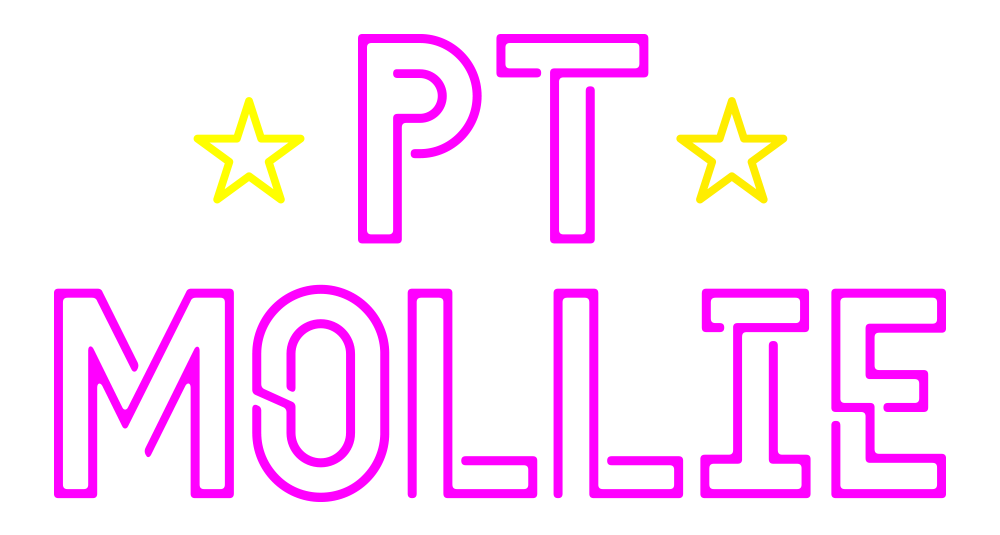





























Recent Comments